After our first Field Naturalist class, we were given the following assignment: Go for a nature walk and make an observation.
I have been training for this assignment my entire life.
Throughout my childhood, I felt most like myself when I was playing alone in the woods. In art school figure drawing class, we were taught to see the human figure in juxtaposition—to look at the angle of the hip, the way it related to the torso. To notice the way light and shadow fell. To take in the negative spaces and the shapes they made. To really see beyond our ideas of what a body looked like and to see this body, right in front of us, in this moment, in this light. The meditation practice I began in my 30’s taught me to be still and patient, to observe without judgment. When I started writing fiction in my 40’s, I learned to strive for precision, to reach for the most specific (and sometimes surprising) detail.
Now, in this world of constant striving, is there a better mandate than to take a walk with no purpose other than to observe?
I was ready. I walked the ten minutes from my apartment over to Weld Hill, an under-explored part of the Arnold Arboretum and the location of the Arboretum’s research center. It’s mostly a big hill, covered almost completely in wildflowers and grasses, dotted with caged saplings they must be doing research on. There is a plowed path down the middle, which at this time of year is a carpet of field crickets. It’s a field I know well, and not at all. The walk is part of my commute, so I see the field almost every day, and love to watch it change. There is so much plant diversity here it feels impossible to learn everyone, but I am trying, goldenrod by aster by tansy.
Our instructions were to make an observation, and then answer the following questions:
What do you notice?
What do you wonder?
What does it remind you of?
What did I notice? A dried head of Queen Anne’s Lace filled with a bright white fiber of some sort. When I pressed down into it, it felt firm, as if the fibers were tightly woven. I peeked into several other heads, to see if the other flowers had the same flossy, white filling. A few had some fiber inside, but most had none at all.
What did I wonder? Isn’t this the greatest question? There is no getting it wrong! It’s just you and your curiosity! The geobiogist Hope Jahren, in her fantastic memoir Lab Girl, says that just wondering about the natural world—making observations and then forming questions about what you observe—makes you a scientist. I’m in! I had (and still have) so many questions. What is this fibrous material? Does the plant make it, or did something (or someone) put it there? And why is it there? Does it serve a function? Is there something buried underneath the fibers? Why this flower and not all of the flowers? Is this some sort of egg-laying situation? If so, when would the eggs hatch? And if it is a nest of some sort, are Queen Anne’s lace the only flowers that will do?
What did it remind you of? I love how this question invites the observer in. It asks us to get personally involved, not to remain on the outside. My own answer surprised me: the flower in my palm reminded me of being young, and warm, and cozy—under a blanket on the couch at my grandmother’s house, drinking tea and eating graham crackers and watching The Price is Right. Those soft white threads would make a wonderful bed for a rogue bee looking for a place to rest for the night.
The stated purpose of this question is to make our observations “sticky” by connecting them to a memory. But I think it also calls us to care a little more, to see the natural world as a part of our own lives.
Not as something just to be held at arm’s length, picked apart, studied, but as something relevant to our lives, resonant, meaningful.
This, I think, is the way to see everything.
A few weeks ago we had our first day out in the field—seven glorious hours outside, with twenty-plus other curious scientists—looking for “herps” (turtles and snakes and salamanders and frogs—more on these soon!). When we found a specimen, we were encouraged to take a step back, and to take in the whole habitat. Was it wetland or upland? Was the leaf litter deciduous leaves or coniferous needles? Was the ground wet or dry? (For the record, it was wet, everything, including us, was wet, it rained the entire day, which is a great way to discover if you really love something—do you love it enough to spend seven hours doing it in a cold rain? For me the answer was YES.) Look up. Is there a clearing above, or a thick canopy? What do you hear? Are you close to water? We were instructed to see not just the spotted turtle, but the spotted turtle in its spotted turtle world.
In another exercise, we stood in place, turning our gaze first up, then to eye level, and then down to the ground. Over our heads was the cloudy gray sky, a red-tailed hawk soaring. Then I turned in a circle. The eye-level green world of pine trees and shrubs was suddenly rusty brown and red—behind me was an entirely different stand of trees. And when I looked down at the ground, I saw that I was standing in a beautiful soft bed of moss. I was hit with the strong awareness of my own towering self—that regular small me was a giant to something like these tiny mosses. It made me want to walk more carefully, to consider my relationship to my own habitat, to be aware of the impact I’m having.
Try this:
Make an observation close to home! Sure, there are all sorts of beautiful places to travel to, but what is happening right now within a one-block radius of where you live? Find something that piques your curiosity and spend a little time with it. Drawing what you observe is an excellent way to slow down and see some small details you might normally miss.
Next, make a list of things you wonder! In this age of Google-everything, I enjoy the micro-rebellion of NOT KNOWING—playing around with possibilities for a while. I’m still thinking about those white fibers. I’m not quite ready to let go of their mystery.
And lastly, of course, record what your subject reminds you of.
Please share in the comments! I would love to know what is happening in your corner of the world!
Nature Writing Recommendation: Lab Girl by Hope Jaren
I loved this memoir so much, and it was especially wonderful to finish reading it while we were studying botany. The book is a perfect balance of plant science, personal memoir and a peek into scientist life. Jaren has a wonderful voice, and her love of her work shines through on every page. It is an especially moving audiobook, read by the author, who lets her vulnerability show.
How is it possibly the end of October? Here in southern New England, the mornings are dark and chilly. It feels as if the sun rises and night falls at a furious pace. I have a constant craving for apple cider donuts. I am in love with the lingering songs of crickets and katydids. I hope you are steeped in your own autumnal joy in whatever form it takes.
Your friend,
Louise




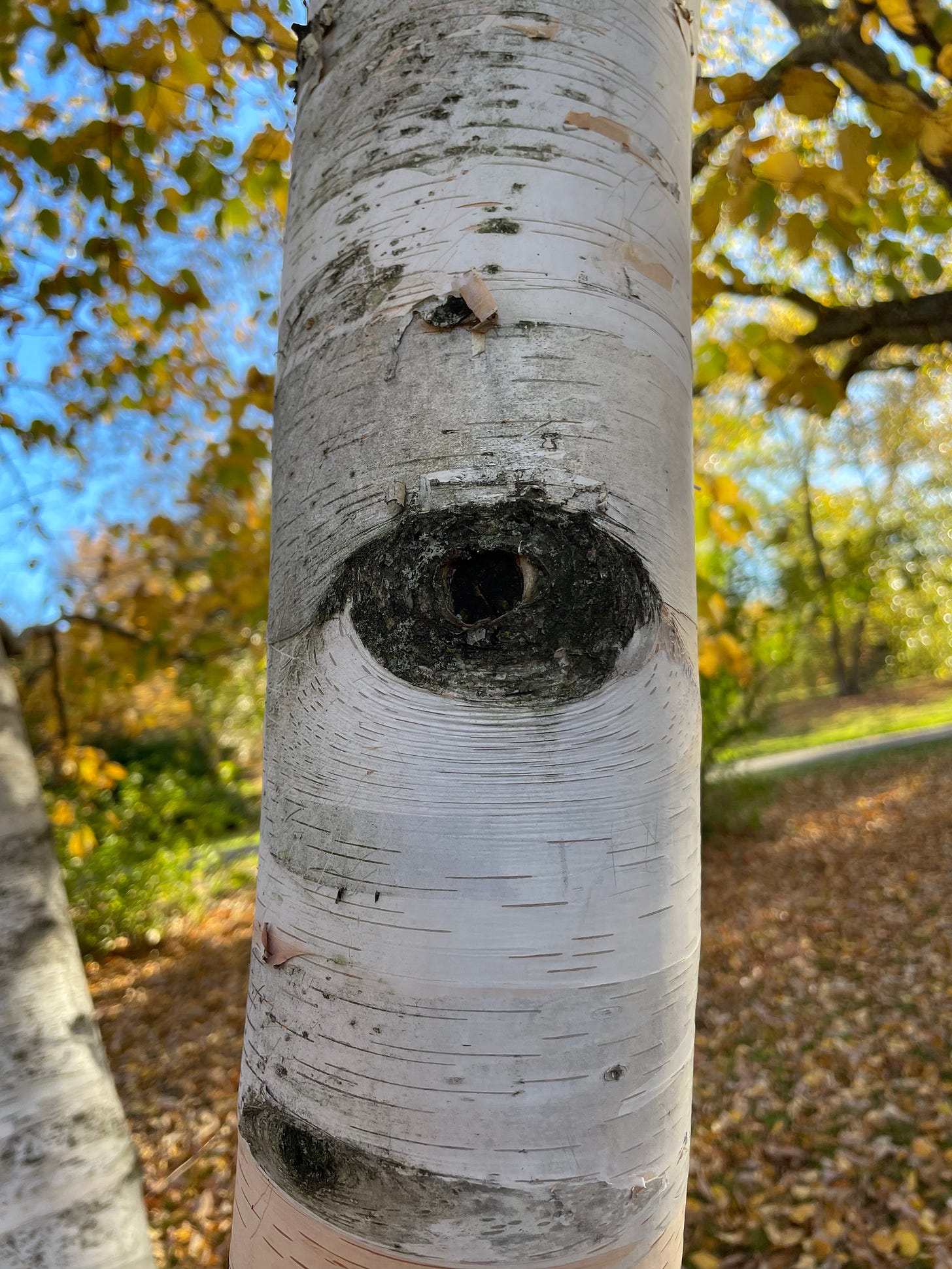

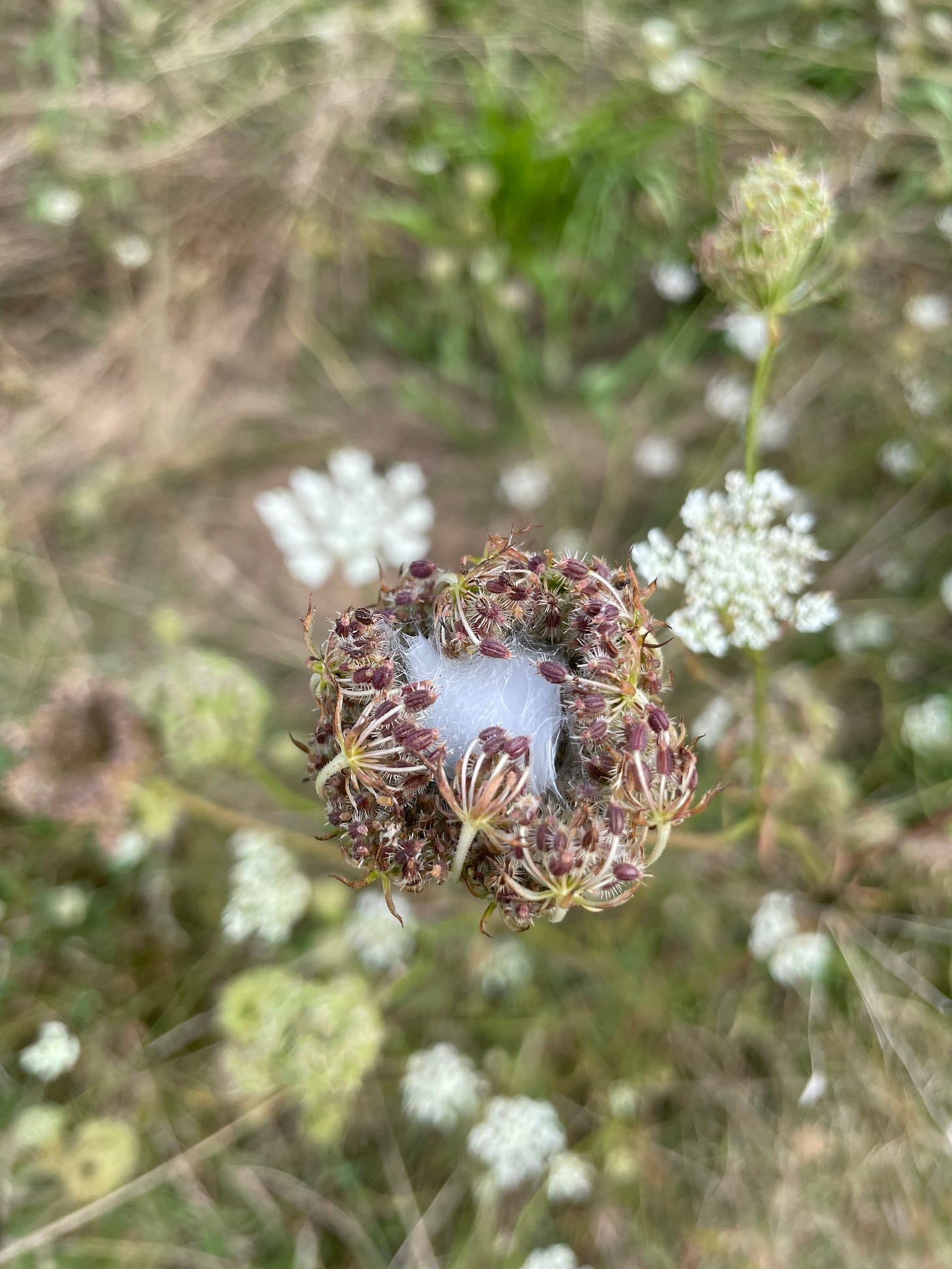

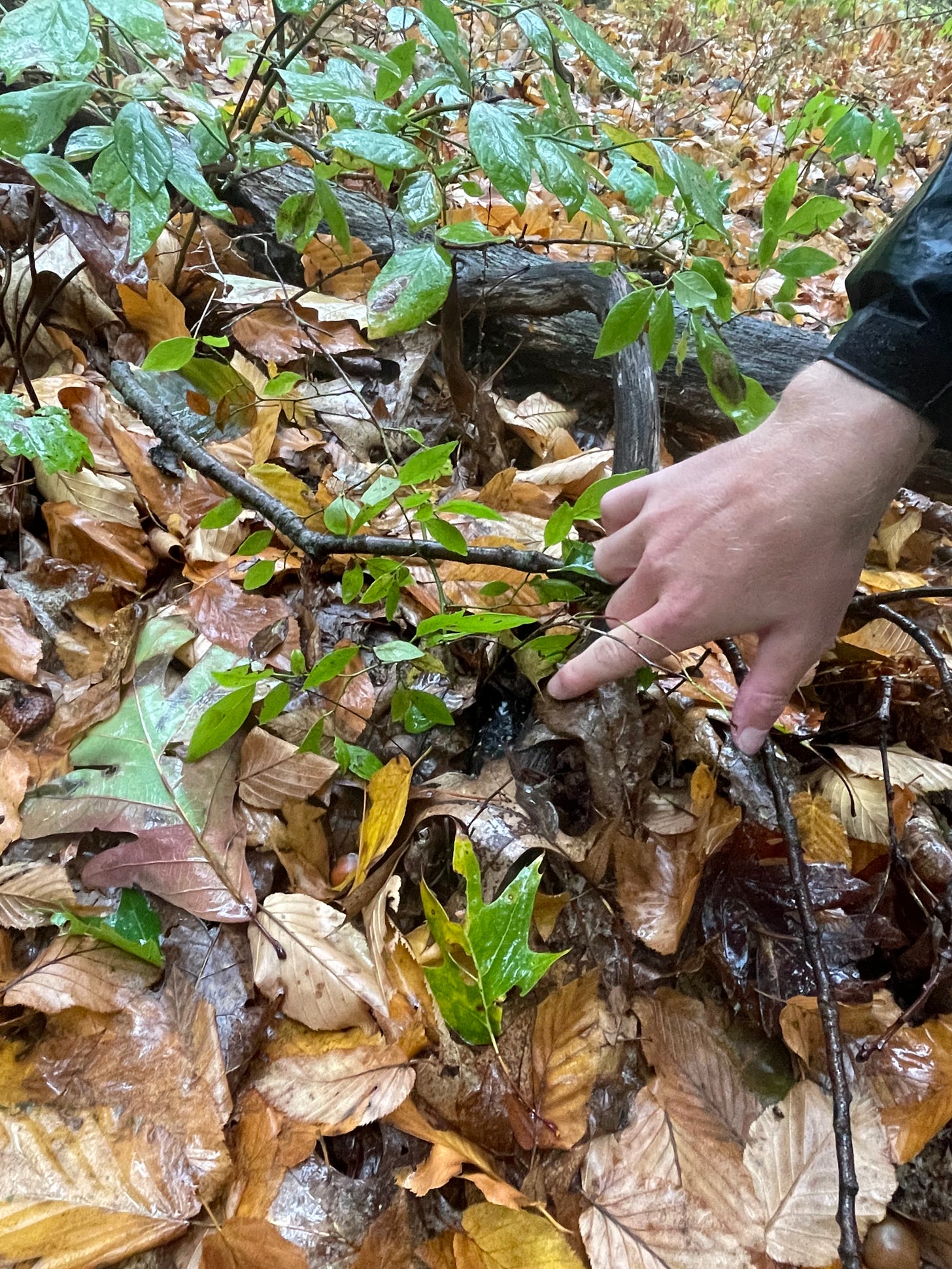

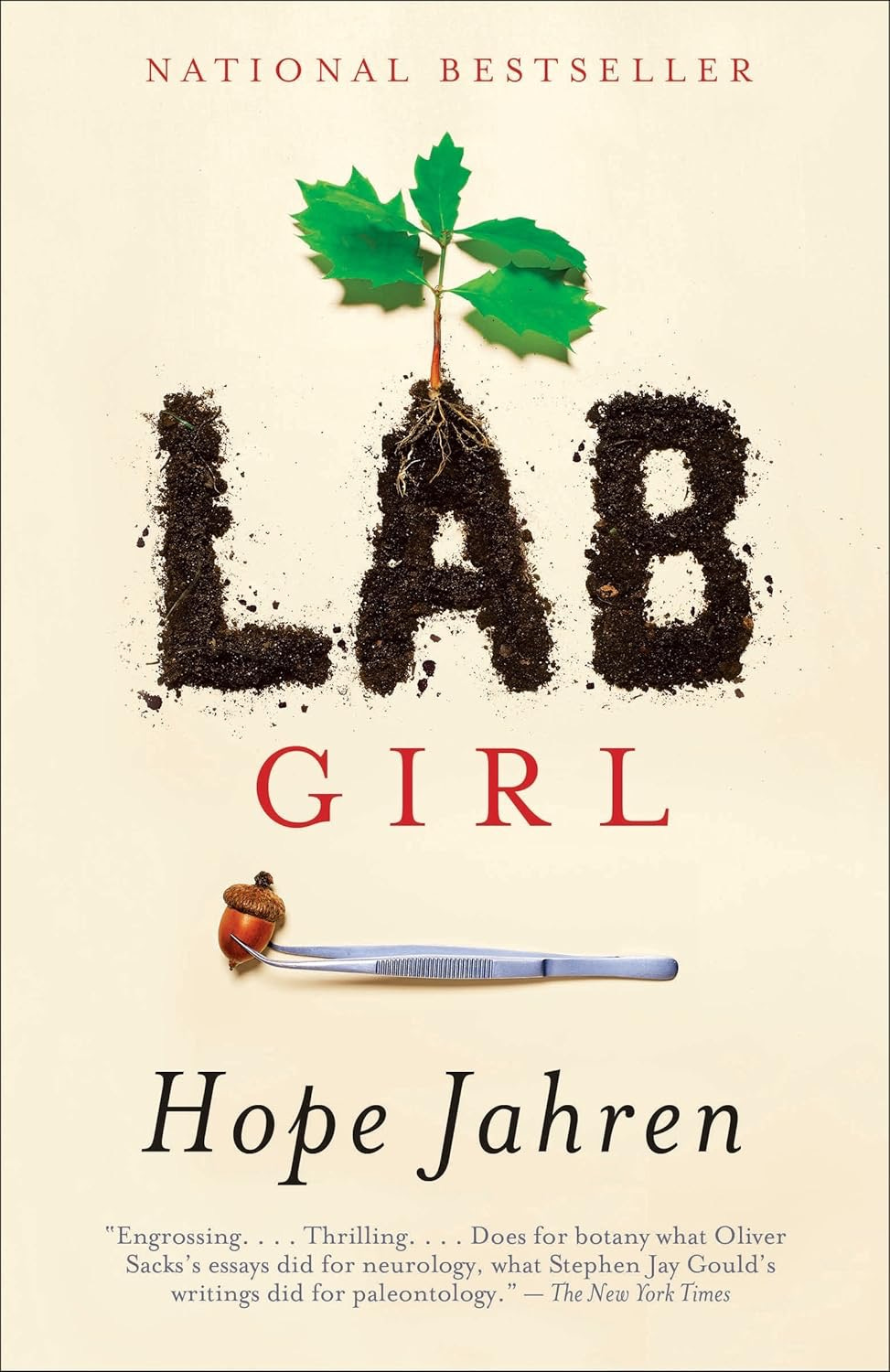
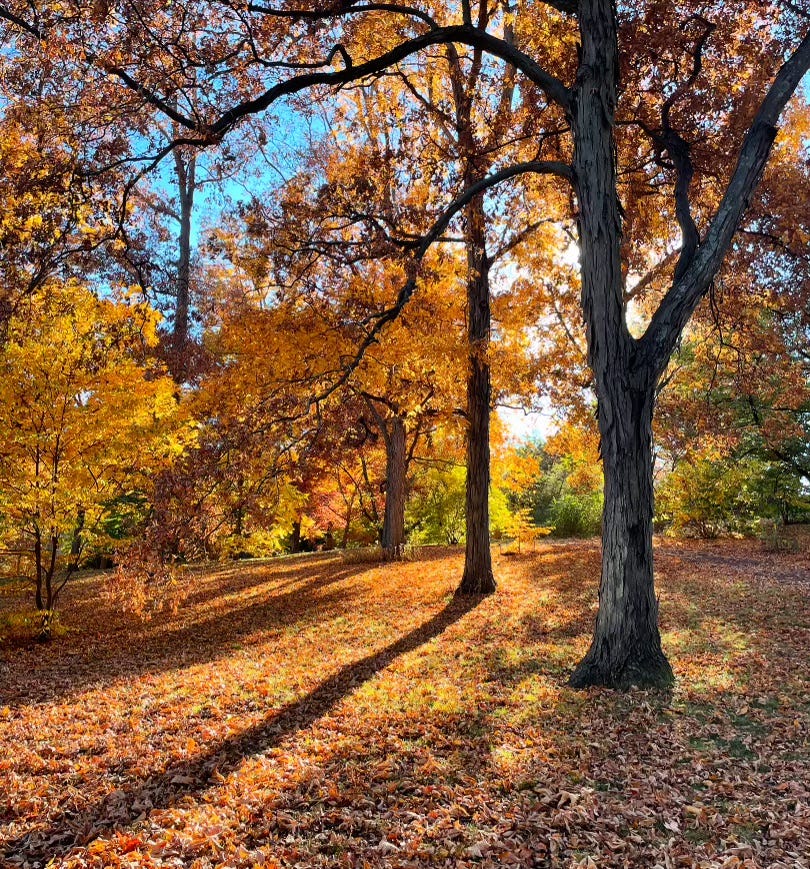
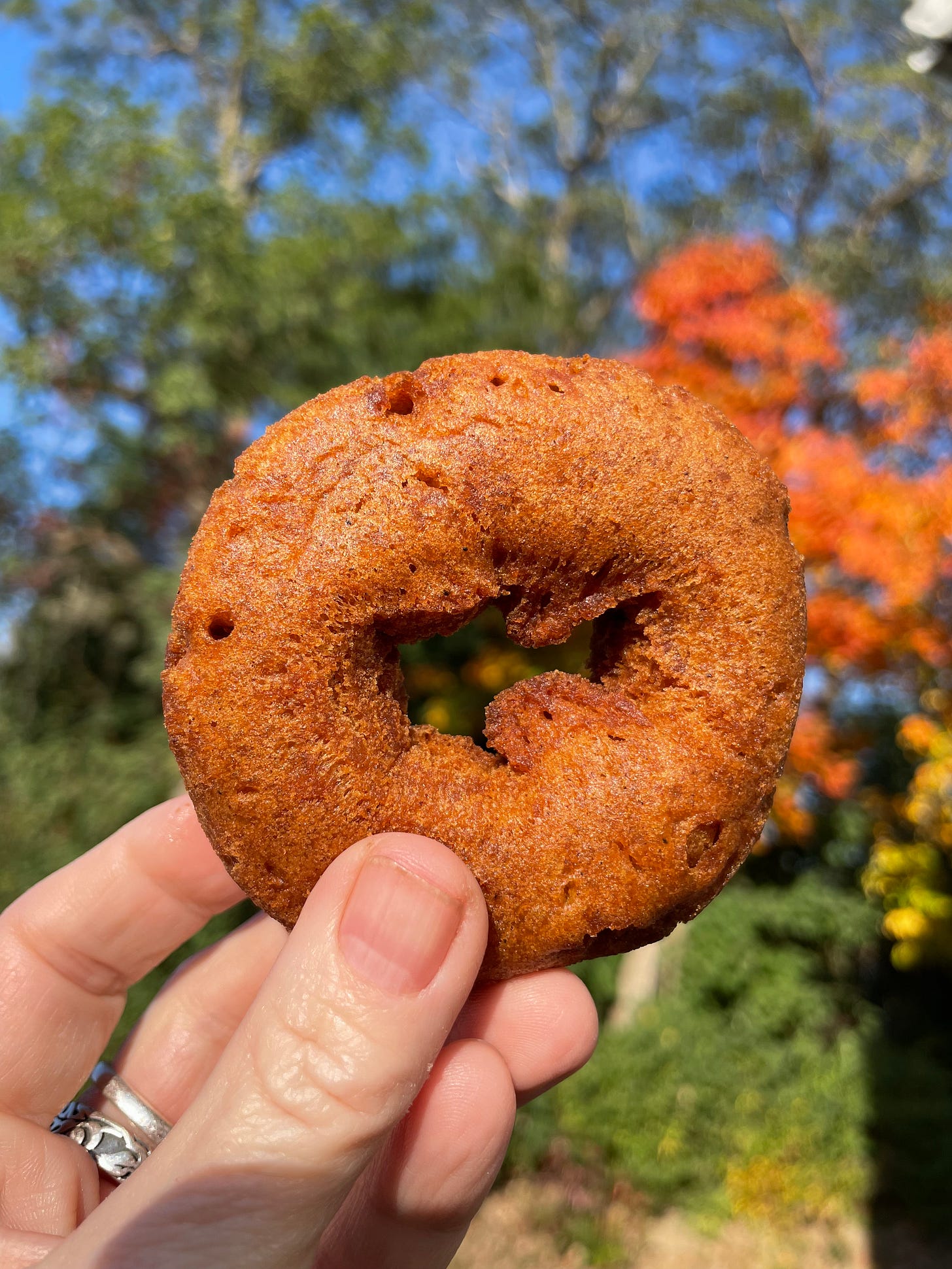
I'm lucky to live near the Mass Central Rail Trail and there are many walking trails off of it. I hadn't been since summer and the first thing I noticed was how the wetland area was dried up. That was alarming! Spotted many Dark-eyed Juncos for the first time since last fall/winter.
This is beautiful, Louise. I love the simple curiosity and where it leads. And I'm dying to know: what IS that fiber inside the queen ann's lace?